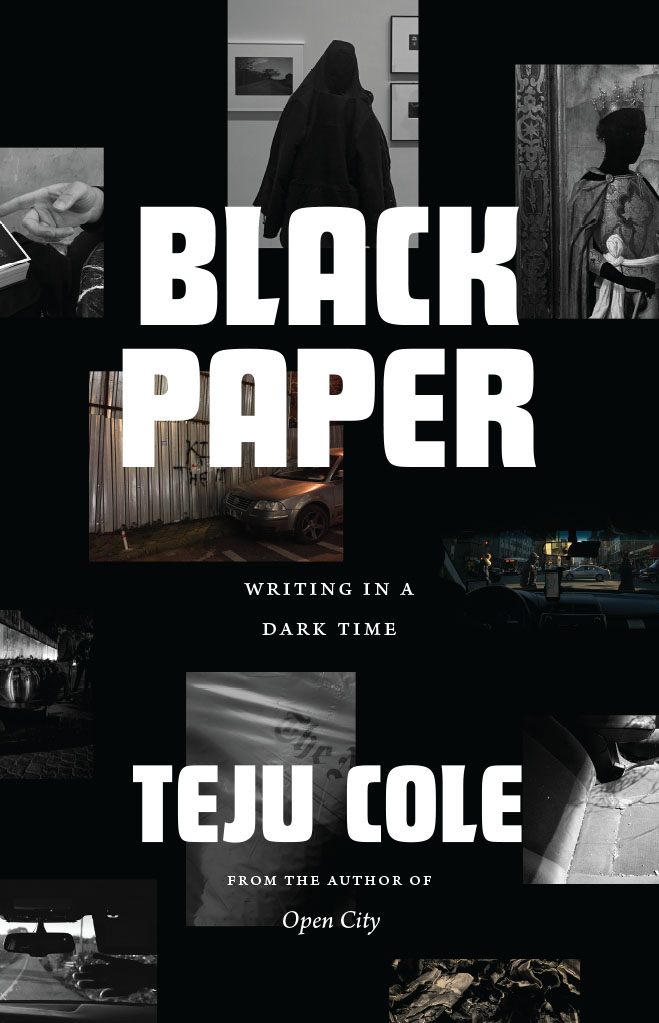
BLACK PAPER
The Randy L. and Melvin R. Berlin Family Lectures
BLACK PAPER
Writing in a Dark Time
TEJU COLE
The University of Chicago Press
The University of Chicago Press, Chicago 60637
The University of Chicago Press, Ltd., London
2021 by Teju Cole
All rights reserved. No part of this book may be used or reproduced in any manner whatsoever without written permission, except in the case of brief quotations in critical articles and reviews. For more information, contact the University of Chicago Press, 1427 East 60th Street, Chicago, IL 60637.
Published 2021
Printed in the United States of America
30 29 28 27 26 25 24 23 22 21 1 2 3 4 5
ISBN-13: 978-0-226-64135-5 (cloth)
ISBN-13: 978-0-226-64149-2 (e-book)
DOI: https://doi.org/10.7208/chicago/9780226641492.001.0001
Library of Congress Cataloging-in-Publication Data
Names: Cole, Teju, author.
Title: Black paper : writing in a dark time / Teju Cole.
Other titles: Randy L. and Melvin R. Berlin family lectures.
Description: Chicago ; London : The University of Chicago Press, 2021. | Series: The Randy L. and Melvin R. Berlin Family lectures | Includes index.
Identifiers: LCCN 2021016936 | ISBN 9780226641355 (cloth) | ISBN 9780226641492 (ebook)
Subjects: LCSH: Arts and society. | Art and society. | PhotographySocial aspects. | Art and race. | ArtsMoral and ethical aspects. | Aesthetics, Modern.
Classification: LCC NX180.S6 C636 2021 | DDC 700.1/03dc23
LC record available at https://lccn.loc.gov/2021016936
 This paper meets the requirements of ANSI / NISO Z39.48-1992 (Permanence of Paper).
This paper meets the requirements of ANSI / NISO Z39.48-1992 (Permanence of Paper).
for Sasha
Contents
COLOR PLATES
BLACK-AND-WHITE FIGURES
Black Paper address the fractures of our recent history through a constellation of interrelated concerns. Most of the essays in the book were written over a period of three years, beginning in late 2016. They explore a wide range of subjects: the color black in the visual arts, the role of shadows in photography, the consolations of music and architecture, elegies both public and private, and the complex links between political upheaval, literature, and activism.
At the heart of the book are the Randy L. and Melvin R. Berlin Family Lectures, which I was honored to deliver at the University of Chicago in the Spring of 2019. Those lectures, under the title Coming to Our Senses, are published here for the first time, in slightly modified form. They argue for the urgency of using our senses to respond to experience, recognize epiphany, and reframe our ethical commitments.
Black Paper is an account of how I have sought out the help of photographers, poets, painters, composers, translators, voyagers, mourners, and mentors to apprehend the wisdom latent in the dark.
1
Michelangelo Merisi da Caravaggio, born in late 1571 in Milan, is the quintessential uncontrollable artist, the genius to whom normal rules do not apply. Caravaggio, the name of the Northern Italian village from which his family came, reads like two words conjoined, chiaroscuro and braggadocio: harsh light mixed with deep dark on the one hand, unrestrained arrogance on the other. Raised in the city of Milan and the village of Caravaggio in a family that some say was on the cusp of minor nobility, Caravaggio was six when he lost both his father and his grandfather, on the same day, to the plague. He was apprenticed around age thirteen to Simone Peterzano, a painter in the region, from whom he must have learned the basics: preparing canvases, mixing paint, perspective, proportion. He apparently developed a facility for still-life painting, and it was probably while studying with Peterzano that he absorbed the pensive atmosphere of Leonardo da Vinci and great Northern Italian painters of the sixteenth century like Giorgione and Titian.
Caravaggio most likely first went to Rome in 1592. The reason might have been his involvement in an incident in Milan in which a policeman was wounded (the details, as with so much else in his life, are foggy). It would be far from the last time he had to get out of town. In Rome, it did not take him long to gain both acclaim and notoriety, and by the mid-1590s his paintings had settled into the styles and subjects we often think of as Caravaggesque: lutenists, cardplayers, a panoply of brooding androgynous youths. Eminent collectors vied for his work, Cardinal Scipione Borghese and Cardinal Francesco Maria del Monte among them. Success went to his head, or perhaps it activated something that had always been there. His language coarsened; his drinking worsened; he got into fights often and was arrested multiple times.
In 1604, Caravaggio was thirty-two. He already had behind him a string of indelible masterpieces, made for Roman patrons and churches: The Supper at Emmaus, The Calling of Saint Matthew in the Contarelli Chapel, The Conversion of Saint Paul in the Cerasi Chapel, The Sacrifice of Isaac, The Incredulity of Saint Thomas. By that year he had also completed The Entombment of Christ, a work of profound grief and astonishing achievement, even by Caravaggios already high standards. But in his personal conduct, he remained reckless. Sometimes he looked for a chance to break his neck or jeopardize the life of another, writes Giovanni Baglione, a contemporary and one of his first biographers. Giovanni Pietro Bellori, a later seventeenth-century writer, tells us, He used to go out on the town with his sword at his side, like a professional swordsman, seeming to do anything but paint. At lunch in a tavern one day, he ordered eight artichokes, and when they arrived, he asked which were cooked in butter and which in oil. The waiter suggested he smell them to figure out the answer himself. Caravaggio, always quick to suspect insult, sprang up and threw the earthenware plate at the waiters face. Then he grabbed a sword; the waiter fled.
As a boy in Lagos, I spent hours poring over his work in books. The effect his paintings have on me, the way they move me but also make me uneasy, cannot be due only to long familiarity. Other favorites from that time, like Jacques-Louis David, now seldom excite me, even as Caravaggios mesmerizing power seems only to have increased. And it cannot only be because of his technical excellence. The paintings are often flawed, with problems of composition and foreshortening. My guess is that it has to do with how he put more of himself, more of his feelings, into paintings than anyone else had before him.
The themes in a Caravaggio painting might derive from the Bible or from myth, but it is impossible to forget even for a moment that this is a painting made by a particular person, a person with a specific set of emotions and sympathies. The maker is there in a Caravaggio painting. We sense him calling out to us. His contemporaries may have been interested in the biblical lesson of the doubting Thomas, but we are attracted to Thomass uncertainty, which we read, in some way, as the painters own.
But theres more than subjectivity in Caravaggio: Theres also the way his particular brand of subjectivity tends to highlight the bitter and unpleasant aspects of life. His compact oeuvre is awash in threat, seduction, and ambiguity. Why did he paint so many martyrdoms and beheadings? Horror is a part of life we hope not to witness too often, but it exists, and we do have to see it sometimes. Like Sophocles or Samuel Beckett or Toni Morrisonand yet unlike themCaravaggio is an artist who goes there with us, to the painful places of reality. And when we are there with him, we sense that hes no mere guide. We realize that he is in fact at home in that pain, that he lives there. Theres the unease.
Next page
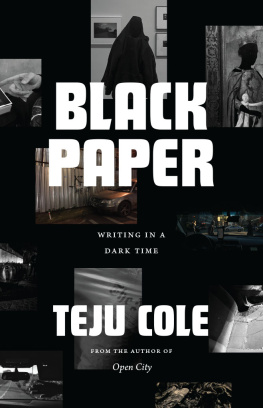


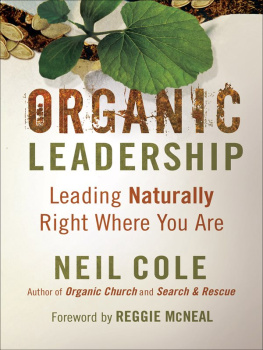
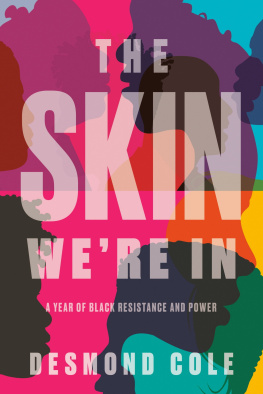
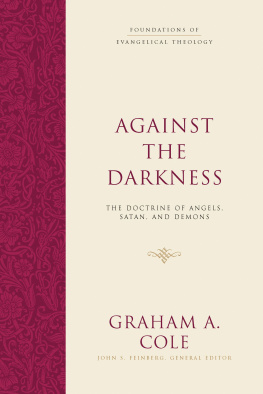
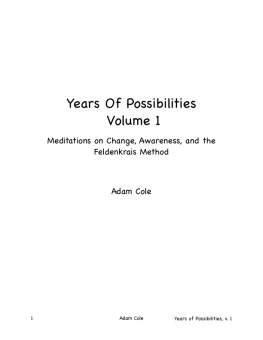
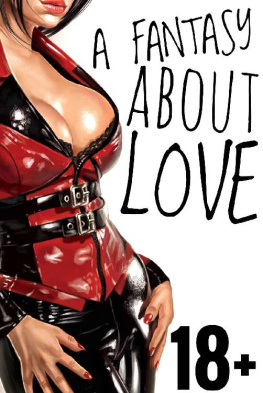
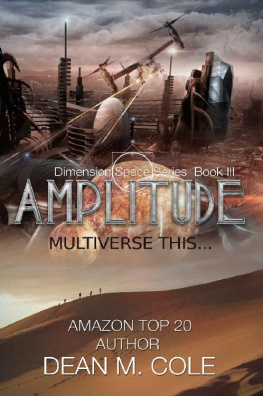
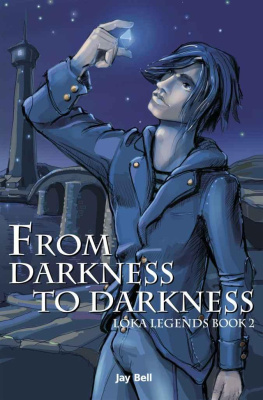

 This paper meets the requirements of ANSI / NISO Z39.48-1992 (Permanence of Paper).
This paper meets the requirements of ANSI / NISO Z39.48-1992 (Permanence of Paper).